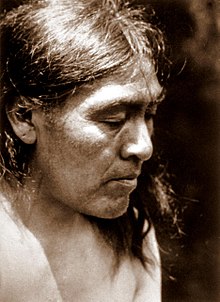Monthly Archives: August 2021
911 The “Sullivan Act” requiring New Yorkers to possess licenses for firearms small enough to be concealed comes into effect

The Sullivan Act is a gun control law in New York state that took effect in 1911. The NY state law required licenses for New Yorkers to possess firearms small enough to be concealed. Private possession of such firearms without a license was a misdemeanor, and carrying them in public was a felony.
Sullivan introduced the state-wide legislation “partly in response to a marked increase in highly publicized violent street crime below Fourteenth Street.”[2] Sullivan and other prominent New Yorkers were under public pressure to act, in the form of letters and recommendations from George Petit le Brun, who worked in the city’s coroner’s office, after a “brazen early afternoon” murder-suicide near Gramercy Park. The law went into effect on August 31, 1911.[3]
The law also made it a felony to own or sell other items defined as dangerous weapons, including “blackjacks, bludgeons, sandbags, sandclubs, billies, slungshots and metal knuckles.”[4]
According to Richard F. Welch, who wrote a 2009 biography of Sullivan, “all the available evidence indicates that Tim’s fight to bring firearms under control sprang from heartfelt conviction.”[5] At the time, “some complained that the law would only succeed in disarming lawful citizens, while others suspected that Sullivan was just trying to rein in the thugs on his own payroll.”[6] Lawman Bat Masterson, a friend of Sullivan’s, criticized the law as “obnoxious” and said that he questioned Sullivan’s mental state of mind over the law.
Source: wiki
1962 – The Caribbean nations Tobago and Trinidad became independent within the British Commonwealth

Most Caribbean countries remained under colonial rule after the abolition of slavery. Between 1958 and 1962 most of the British-controlled Caribbean was integrated as the new West Indies Federation in an attempt to create a single unified future independent state. The West Indies Federation fell apart when the largest island Jamaica withdrew from the federation and declared itself independent in August 1962 followed by Trinidad and Tobago in August 1962.
Road to Independence
Most Caribbean countries remained under colonial rule after the abolition of slavery. Between 1958 and 1962 most of the British-controlled Caribbean was integrated as the new West Indies Federation in an attempt to create a single unified future independent state.
The West Indies Federation fell apart when the largest island Jamaica withdrew from the federation and declared itself independent in August 1962 followed by Trinidad and Tobago in August 1962. By the end of the 1960s, only few Caribbean islands remained dependent territories. Barbados gained its independence in 1966; the Bahamas in 1973; Grenada in 1974; Dominica in 1978; St. Lucia and St. Vincent and the Grenadines in 1979; Antigua and Barbuda in 1981; and St. Kitts and Nevis in 1983.
Currently, Montserrat, the British Virgin Islands, the Cayman Islands, and the Turks and Caicos Islands remained crown colonies with limited internal self-government. Anguilla, having broken away unilaterally from St. Kitts-Nevis in 1967, became an Associated State of Great Britain in 1976.
Jan.6 –
Four odd but true facts … August 29
August 29
By Michelle Cherie Carr Crowe Just Call…408-252-8900Real Estate Agent with Get Results Team…Just Call (408) 252-8900! . DRE #00901962 . Licensed to Sell since 1985 . Altas Realty DRE# 00901962 Lic.1985 August 28, 2021 10:00 AM

What do Ishi and the first American Indian reservation have in common? Both share an important anniversary on August 29th.
1758 – The first American Indian reservation (now known as a Native American reservation) is established at Indian Mills, New Jersey.
1885 – Gottlieb Daimler patents the world’s first internal combustion motor for the Reitwagen.
1898 – The Goodyear tire company is founded.
1911 – Ishi, believed to be the last remaining member of the Yahi, a group of the Yana people, emerges from the wilderness of northeastern California near Oroville. Ishi is considered the last Native American to make contact with European Americans.
Ishi means “man” in the Yana language. Anthropologist Alfred Kroeber gave this name to the man because in the Yahi culture it is rude to ask a person’s name. Ishi was taken in by anthropologists at the University of California, Berkeley, who both studied him and hired him as a research assistant until his death.
Image of Ishi is originally from the University of California, Berkeley, and is in the public domain


You must be logged in to post a comment.